

Table of contents
- Long-tailed mice (Muridae)
- Shrews (Soricidae)
- Voles (Arvicolinae)
- Other mouse species
- frequently asked Questions
In Germany, not only field mice and house mice are native, but also some other species that you often don't see at all or only very rarely. Here we present 20 native mouse species.
Long-tailed mice (Muridae)
Alpine wood mouse (Apodemus alpicola)
This mouse lives mainly in the forests of the Alps. The body and tail of this mouse are about the same length.

- Body length: up to 12 cm
- Appearance: Upper side brown to dark brown, underside light, longer hind legs
- Habitat: light forests with open grass or rocky areas
- Damaging effect: none, mainly eats insects or small seeds from wild plants
- natural enemies: smaller predators of the alpine region
- Combat: not necessary
Field vole (Apodemus agrarius)
The essential feature of the band mouse is the black line down the middle of the back.
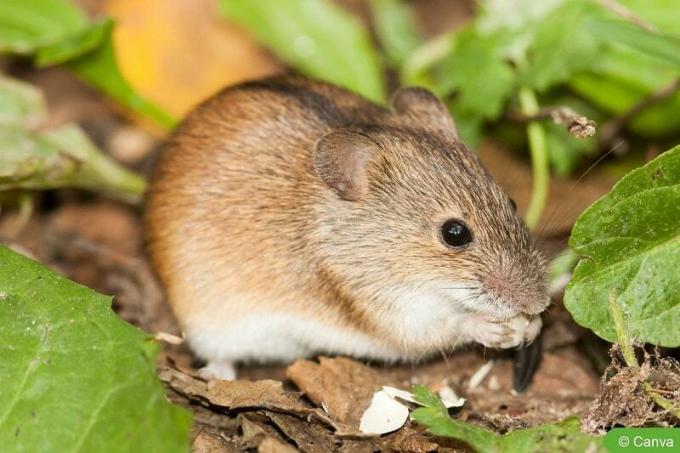
- Body length: up to 12 cm
- Appearance: Reddish brown on top, lighter underneath, ears and tail rather small compared to other mice
- Habitat: Common everywhere, prefers moist habitats in forests, gardens, parks, on meadows and by ponds
- Harmfulness: low, but transmits the hantavirus
- natural enemies: mainly cats near settlements
- Control: not necessary, but keeping your distance is advisable
Yellow-necked mouse (Apodemus flavicollis)
The yellow-necked mouse is very good at jumping and climbing. She likes to put supplies in nest boxes at.
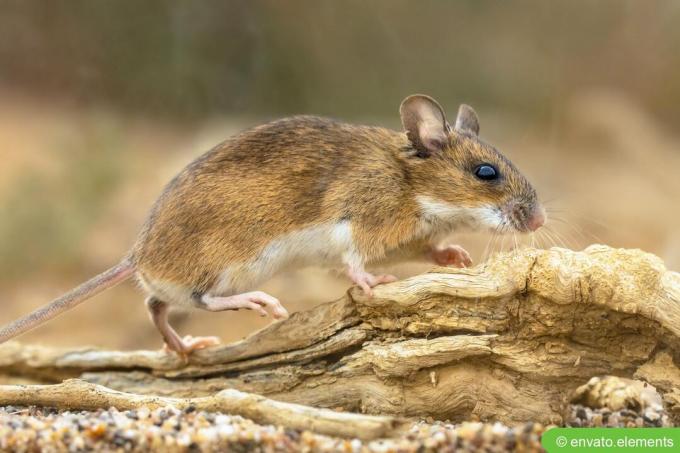
- Body length: up to 10 cm
- Appearance: Tail slightly longer than body, yellow-brown on top, lighter, conspicuous yellowish throat patch on underside
- Habitat: mainly in forests
- Damaging effect: low, may eat tree seeds or seedlings
- natural enemies: foxes
- Combat: not necessary
house mouse (Mus musculus)
The House mouse is probably one of the best-known mouse species in Germany and is often revealed by its gnawing activity or its unpleasant smell. Old newspapers, wool or scraps of fabric serve as nesting material.
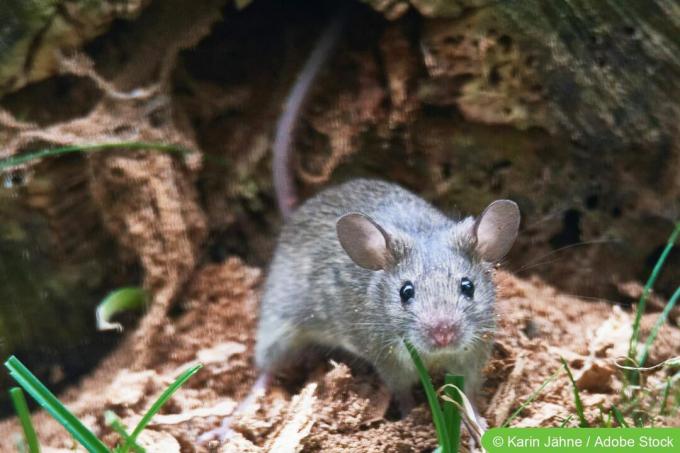
- Body length: up to 11 cm
- Appearance: Tail as large as body, uniform grey
- Habitat: Almost exclusively in or near buildings
- Harmful effect: stored product pest, disease vector
- natural enemies: difficult indoors, cats, young animals are also eaten by shrews
- Combat: with traps
A notice:
We recommend live traps. You should definitely refrain from using poisoned baits.
wood mouse (Apodemus sylvaticus)
The wood mouse likes to jump and climb. She stocks up seeds and fruit for the winter.

- Body length: up to 9 cm
- Appearance: Tail as long as body, light brown above, whitish below, large eyes
- Habitat: Often in wooded areas, but also in tree-rich gardens or parks, in winter also in buildings
- Damaging effect: low, possibly eaten seedlings or storage pests in the house
- natural enemies: predators of all kinds
- Fighting: not necessary, in the house by traps
Harvest Mouse (Micromys minutus)
Unlike many other mice, this one does not live underground. Instead, she builds her nest between Grain or blades of grass.
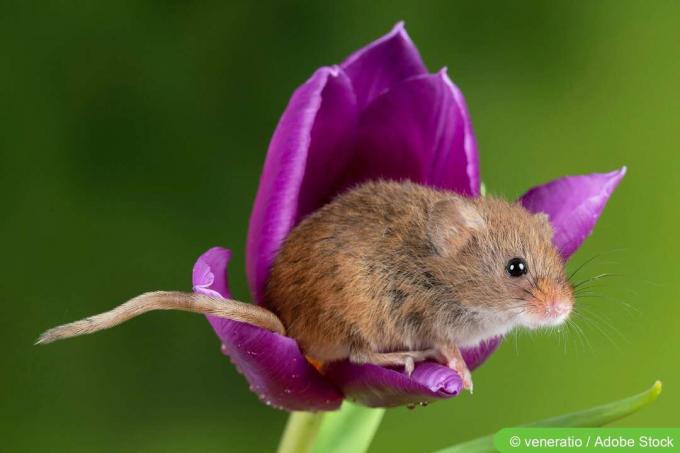
- Body length: up to 6 cm
- Appearance: Tail as long as body, brown above, lighter below
- Habitat: Meadows, cornfields, low vegetation, likes to climb, uses tail as a grasping organ
- Damaging effect: almost none
- natural enemies: cats, weasels, marten
- Combat: not necessary
A notice:
The harvest mouse is one of the smallest native mice.
Shrews (Soricidae)
Alpine Shrew (Sorex alpinus)
The natural range of the alpine shrew includes not only the German Alps, but the entire Alpine region. In the lowlands, however, this shrew does not occur.
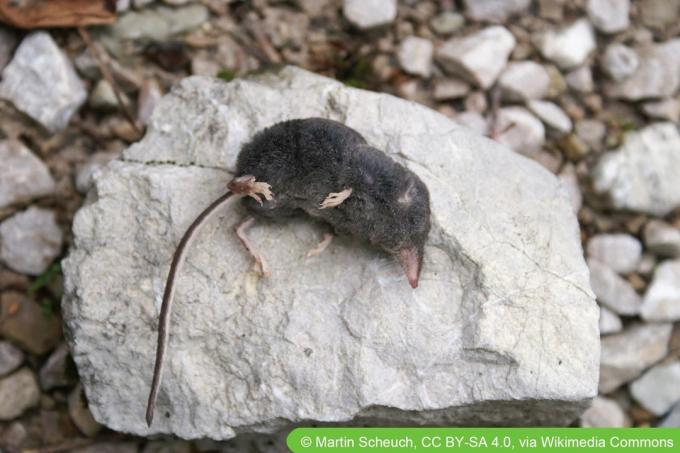
- Body length: up to 85 mm
- Appearance: Tail about as long as body, dark gray in color, light colored feet
- Habitat: widespread in the Alps and other high mountains, lives in rock crevices
- Harmful effect: none, more likely to be counted among the beneficial insects, eats insects and snails
- natural enemies: birds of prey and smaller predators
- Control: not necessary and forbidden, protected species
A notice:
Scientifically speaking, shrews are insectivores, not rodents, despite their external similarities to mice. However, since there is hardly any difference in everyday language use, you will also find them in this list.
American shrew (Crocidura leucodon)
In contrast to the field mouse, the field shrew is not a pest. It does not eat crops and does not dig in the ground.
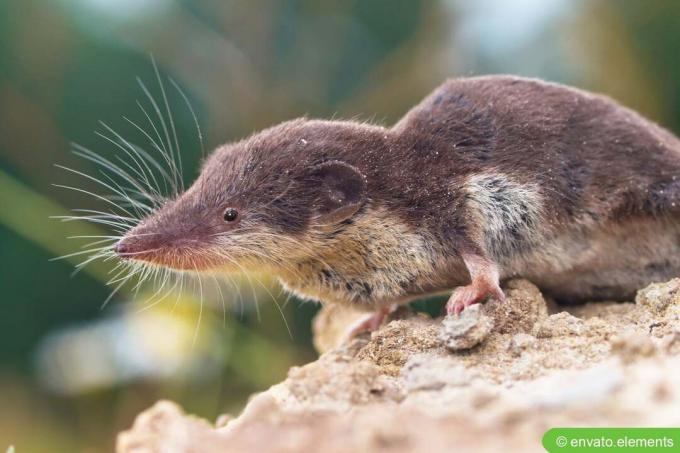
- Body length: up to 7.5 cm
- Appearance: Dark gray above, light below, tail half the size of the body
- Habitat: widespread, but inconspicuous, in winter also in buildings
- Harmful effect: none, shrews are beneficial
- natural enemies: mainly owls
- Combat: not necessary
Garden shrew (Crocidura suaveolens)
While garden shrews are widespread, they are not so conspicuous that you would notice them living in your own yard. You may hear their chirping sounds.
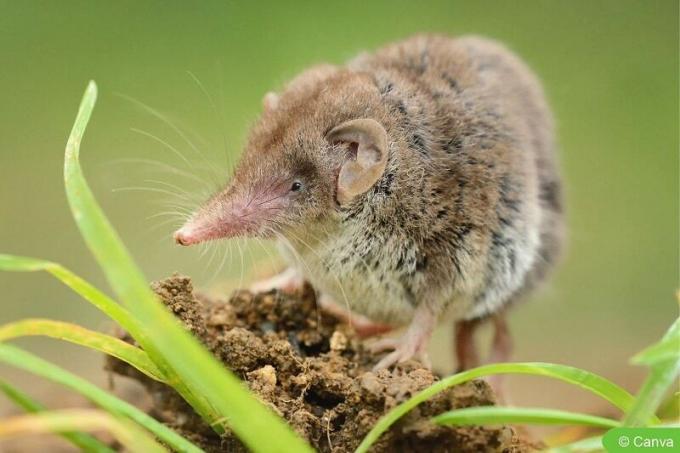
- Body length: up to 6.5 cm
- Appearance: grey-brown, not sharply demarcated above and below
- Habitat: in gardens, especially fond of in the compost heap, in winter also in buildings
- Damaging effect: none
- natural enemies: mainly cats (which they usually don't eat) or owls
- Control: not necessary, a promotion is better
Tip:
Garden shrews are beneficial insects that eat snails, Egerlinge and other harmful insects in the garden.
Wood shrew (Sorex araneus)
Like all shrews, this one also has the typical pointed snout and communicates with each other with chirping sounds reminiscent of birds.
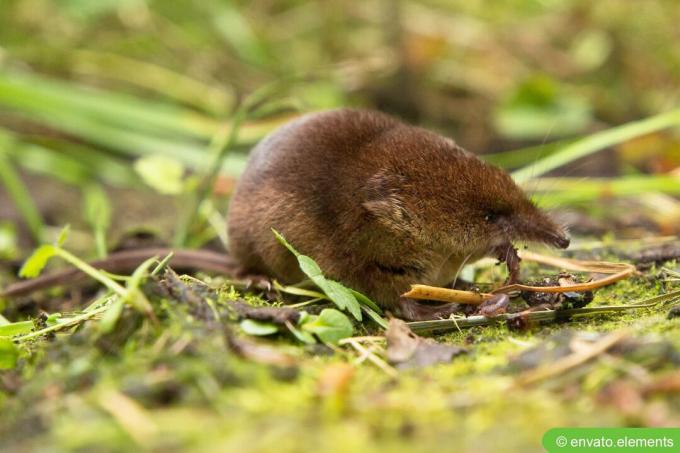
- Body length: up to 7 cm
- Appearance: Tail about half the length of the body, dark brown above, lighter sharply defined below
- Habitat: Common everywhere, but unremarkable
- Harmful effect: none, eats insects, therefore more beneficial
- natural enemies: owls and others birds of prey, mostly avoided by predators
- Combat: not necessary
Pygmy Shrew (Sorex minutus)
The pygmy shrew is the smallest representative of the shrews. Like other shrews, it does not eat plants and is therefore not a pest.
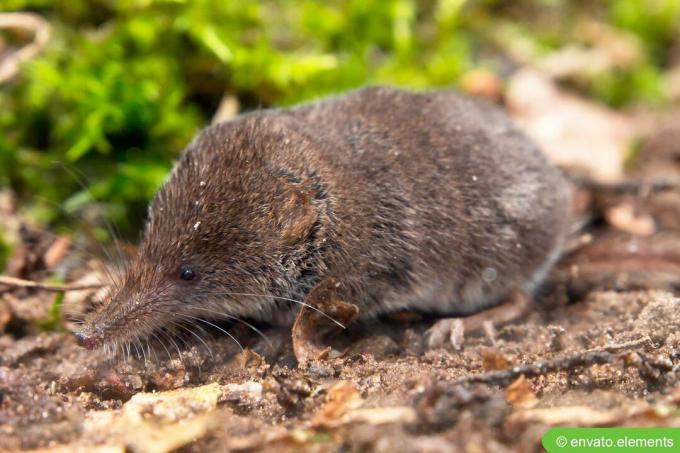
- Body length: up to 5 cm
- Appearance: Tail slightly shorter than body, dark brown to reddish brown on top, lighter underneath
- Habitat: primarily in damp areas, such as wet meadows or moors
- Damaging effect: none
- natural enemies: mainly owls
- Combat: not necessary
Voles (Arvicolinae)
Bavarian short-eared mouse (Microtus liechtensteini bavaricus)
Slightly larger than the similar short-eared mouse, the Bavarian representative is one of the mice species that are now considered critically endangered. In fact, it is unclear whether there are any copies at all.
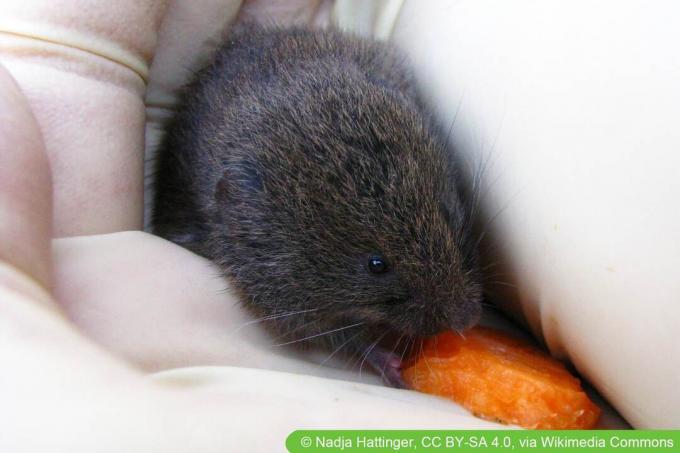
- Body length: up to 106 mm, tail up to 44 mm
- yellow-brown fur, very small ears
- Habitat: mainly in underground passages, near the Alps
- Damaging effect: none
- Combat: not necessary
Field Vole (Microtus agrestis)
The ground vole belongs the voleswho like to dig up grasslands and gardens. In fact, the extensive gait system of these mice can lead to that holes appear everywhere in the garden.

- Body length: up to 10 cm, tail about half as long
- Appearance: Dark gray body, relatively long coat, ears barely visible
- Habitat: wet meadows or fields
- Harmful effect: among other things forest pest, undermines grassland and eats plants in fields
- natural enemies: birds of prey, foxes
- Control: difficult in the wild, in the garden possibly with traps
Field mouse (Microtus arvalis)
The field mouse is one of the best-known mice in Germany. It is feared as a pest by both farmers and gardeners.
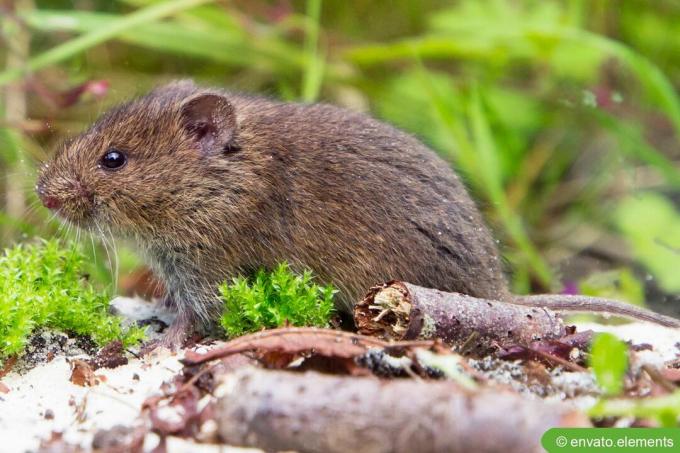
- Body length: up to 10 cm
- Appearance: Gray above, lighter below, tail half as long as body
- Habitat: Green spaces, fields, gardens
- Harmful effect: eats roots of young trees, vegetable and field crops
- natural enemies: cats, possibly dogs, wild beasts of prey and birds of prey
- Control: in the garden with snap traps, but not very promising due to the great willingness to reproduce
Short-eared mouse (Microtus subterraneus)
The short-eared mouse is named after its very small ears. Although it also lives in gardens, it is hardly conspicuous, except when it eats a lot of cultivated plants.

- Body length: up to 9 cm
- Appearance: Tail length about one third of body, gray above, lighter below, sometimes yellowish
- Habitat: Grassland, gardens, living almost exclusively underground
- Harmful effect: eats away at plant roots
- natural enemies: cats, other small predators
- Fighting: rarely necessary, possibly with traps
Nordic vole (Microtus oeconomus)
The swamp mouse can swim very well in accordance with its habitat. It is one of the mice species that have become rare and are therefore protected.
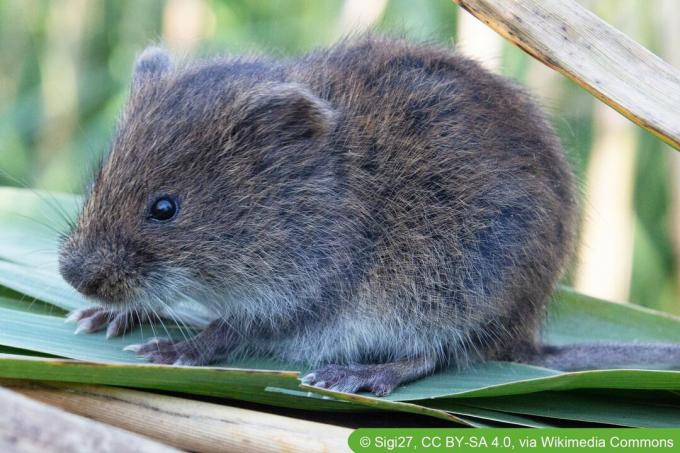
- Body length: up to 13 cm
- Appearance: Tail about half the length of the body, upper surface gray with yellow tinge or blackish brown, underside light
- Habitat: exclusively in wet areas, bogs, swamps, bodies of water with dense vegetation
- Damaging effect: none or only slight in the bank area
- natural enemies: foxes, martens, birds of prey
- Combat: not allowed and not necessary
Eastern water vole (Arvicola amphibius)
The eastern water vole is one of the largest representatives of the voles. Unlike other mice, this one loves to swim.
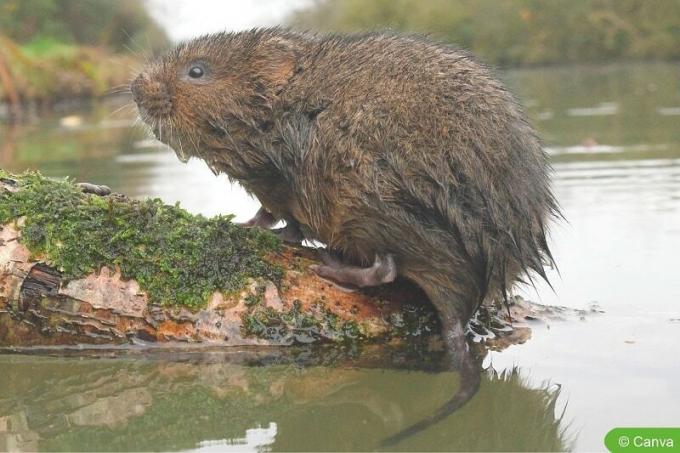
- Body length: up to 17 cm
- Appearance: Tail about half as long, top very dark, underside lighter
- Habitat: open cultural landscape, but also near water
- Harmful effect: only in case of excessive occurrence
- natural enemies: foxes, martens
- Combat: usually not necessary
Bank vole (Myodes glareolus)
This vole is very fond of climbing and gnawing. It is one of the most common mouse species in Germany.

- Body length: up to 10 cm
- Appearance: Tail about half the length of the body, reddish brown fur, lighter underneath
- Habitat: Forests, hedges, parks, rarely gardens
- Harmful effect: possibly in young seedlings in the forest, disease carrier
- natural enemies: foxes, martens
- Combat: not necessary
A notice:
The bank vole is considered a common carrier of the Hanta virus. Where possible, avoid direct or indirect contact with the mice.
Other mouse species
Dormouse (Muscardinus avellanarius)
The nocturnal rodent actually belongs to the Bilche family (Gliridae). In the EU, the dormouse is under special species protection.

- Body length: up to 9 cm
- Appearance: Tail length approximately equal to body size, tail densely haired, orange-brown upper side, cream-yellow underside, white throat patch
- Habitat: Forests with heavy shrub growth, hedges
- Damaging effect: none
- natural enemies: fox, little weasel, ermine, birds of prey and owls
- Combat: not necessary
Birch mouse (Sicista betulina)
The best-known representative of the birch mice (Sicista) is one of the smallest mice species and can be easily recognized by the conspicuous line that runs lengthwise over the back.
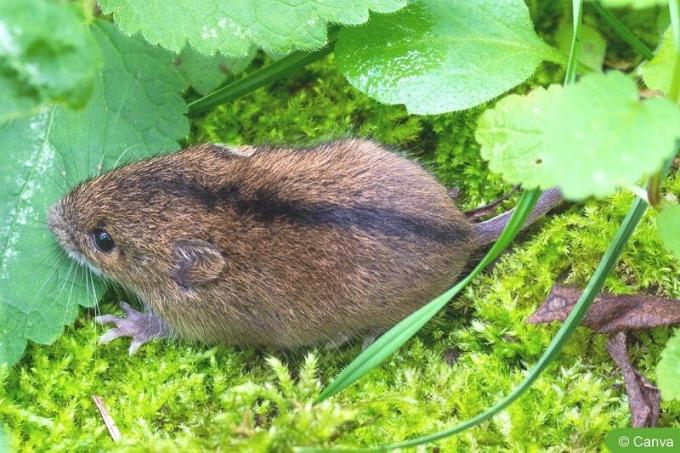
- Body length: up to 7 cm
- Appearance: Tail much longer, yellow-grey on top with a prominent black back line, light gray on the underside
- Habitat: in southern regions, forests, moors, wet meadows
- Damaging effect: none
- Combat: not necessary
frequently asked Questions
It is possible to set up mousetraps in your own home or garden. Only a few mouse species are protected and they do not usually stay close to humans.
Since mouse droppings can transmit diseases, it always makes sense to remove it with just gloves and a dustpan and broom. A vacuum cleaner should not be used, as this could spread the dust from the mouse droppings throughout the room.
Always store food in tightly closed containers. Protect fruit and vegetables, for example in the basement, with dense wire mesh.
 Mirko
Mirko
Learn more about garden animals

Feeding squirrels in winter: what can you feed? What not?
In winter, prudent gardeners prepare a richly laid table for birds. Squirrels are usually left behind. In fact, the funny climbing artists depend on our help in the harsh winter. You can find out here how to feed squirrels in winter in an exemplary manner.

How and where do mosquitoes hibernate? All information at a glance
If the winter is cold, there are fewer mosquitoes the following year - the sentence sounds logical, but it is just an untrue myth, because the number one pests for people survive the winter and at the same time take care of the multiples Offspring. You can find out how and where mosquitoes hibernate in the home garden guide and knowledge journal.

How do ladybugs hibernate? Do they hibernate?
Ladybugs (Coccinella) are very valuable to nature. From autumn onwards, they can usually be seen in flocks, setting out to protect themselves from the cold winter temperatures. Depending on the species, the ladybugs spend the European winter time differently. Learn how and where that is.

How and where do butterflies hibernate? All information about winter
When it starts to get cold outside and the food supply decreases rapidly, it is also high time for butterflies to take precautions for hibernation. Exactly which ones these are depends on the butterfly species in question, because as diverse as they are, they also have different strategies for surviving the winter.

How do snails overwinter? Where nudibranchs cavort
Snails are among the most unwelcome plant pests, but they are important for nature. While poisons and traps make things difficult for the creeping companions from spring to summer, the cold temperatures hit in winter. Find out how snails survive the winter and where the pesky slug has its winter quarters.

Where and how do squirrels hibernate? Do they hibernate?
When winter comes, a special season begins for squirrels. At this time of year, bodily functions slow down. While this means hibernation for cold-blooded animal species, others survive the cold winter months by hibernating or hibernating. You should know how and where the squirrel spends this time and how you can help the rodents before the onset of winter.



